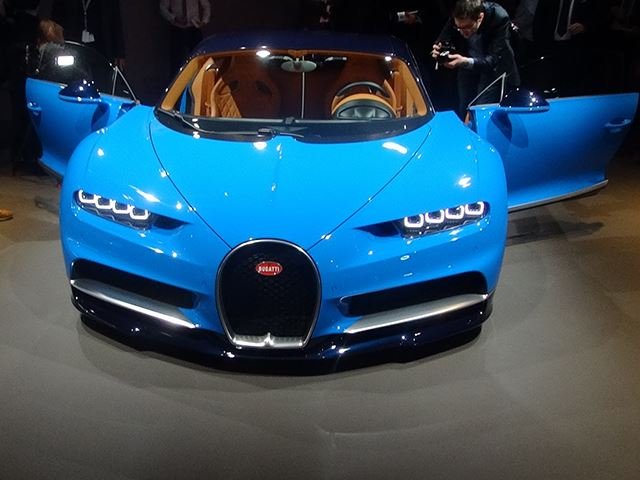The Bugatti Chiron Looks Great In The Metal, But What's Its Real Top Speed?

But despite its looks the design gave the car’s impressive collection of numbers an iconic face. Those working on the Chiron had to retain this characteristic shape while creating a look that not only keeps the car relevant for the next decade but helps it stand out in a world filled with McLarens, Ferraris, Porsches and Lamborghinis.


Much like the Veyron, the Chiron looks like a car eating another car. But unlike the Veyron, the cars eating each other aren’t VW Beetles. Gone is the flat pug face and love handles that adorned the Veyron. Instead, the Chiron has a pronounced nose that sticks out from a chiseled and furrowed brow to antagonize other hypercars. The migration away from bubble wrap design extends rear with sleek, stout, and handsome midsection lines. This Bugatti looks fit; its floating singular taillight strip has more in common with the athletic McLaren P1 than the Veyron. This makes the car look a lot prettier and more aggressive, or in Bugatti’s own words, “combines significantly more beast with a very high level of beauty."
For a rare animal that has 1,500 thumping horses going to four wheels through the biggest clutch ever fitted to a passenger car, this modern look is a good thing because its telling of all the tech underneath. The four turbochargers (two of which are electrically driven) work in two stages to eliminate turbo lag and allow the reworked 8.0-liter W16 from the Veyron to get from 0-60 mph in less than 2.5 seconds. The Chiron’s mad dash to launch itself from Earth stops at 260 mph if you're on a public road. This is seven mph less than the Veyron Super Sport, but Bugatti has elusively said that this isn’t the end of the road for the Chiron, and the 310 mph speedometer only helps to back those statements up.






The hardware proves that Bugatti means business. In place of the Veyron’s single exhaust pipe are six titanium pipes (two pipes point downwards) that get rid of burnt fuel and the 15,850 gallons of air that the engine inhales in a minute. Hiding under the body are active aerodynamic diffusers by the front axle that work with the adaptive rear spoiler to be slippery at speed and grab the air while braking. Thirty-seven liters of coolant snake through 10 radiators in three seconds to keep the car from melting while over 50 silicon brains ensure that the Chiron’s IQ is higher than anything else on the road. Of course most of this kit was designed in aerospace facilities, adding to the car's otherworldliness.
However owners shouldn’t be scared of being inside a machine that plays with extremes because the interior mediates the experience with plush leather, carbon fiber, aluminum, beautiful lighting, a flat-bottom steering wheel, and aesthetics straight from a Bond villain’s lair. Take a look at our live shots from Geneva as well as Bugatti's own press photos, and if you’re one of our readers who uses bank vaults as a measure of fun then hurry up and place an order because a third of the 500 Chirons that will be built are already spoken for.
Related News
